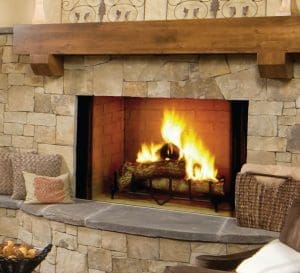
The intent of this guide is to provide you, the consumer, with information that will allow you to be more comfortable with your fireplace, gas logs, or stove purchase. We have included general information about the chimney as well. It is the hope of ComfyHearth.com that this additional information will give you the confidence that will encourage you to have total enjoyment of your hearth products for many years to come.
To maximize your enjoyment of your fireplace or wood-stove several things are required:
The first, and most important step in this process is to determine that everything is properly installed and safe to operate. Without this assurance you could never be fully at ease and able to enjoy your fire without reservation.
The second factor needed to fully enjoy your fire is the knowledge that you have the proper information. The owners of ComfyHearth.com have over 24 years of experience in the industry. This guide is not an attempt to replace your owner’s manual or local codes which you should always consult first. Nor is it an attempt to sell you anything but will hopefully provide you with peace of mind and the ability to enjoy your wood-burning stove, gas hearth appliance or fireplace with confidence.
Wood burning fireplaces:
When most people think of cold winter evenings, they think of fireplaces. Since the dawn of time, humans have gathered around the open fire for a sense of safety and community, and the fireplace is still the focus of family living in many homes, especially around the holidays. Wood burning fireplaces come in two general types, masonry fireplaces built entirely of bricks, blocks or stone and mortar, and factory-built fireplaces consisting of a lightweight metal firebox and a metal chimney.
- A masonry fireplace has a firebox built of individual generally yellowish firebrick, a brick chimney above the roof, and if you look up past the damper you will see a roughly pyramid shaped affair also built of brick.
- Factory-built fireplaces and chimneys have gained popularity in newer homes because both the material and installation costs are generally lower than for masonry fireplaces. Factory-built units are often referred to as “zero-clearance” or “prefab” units. When properly installed, these units are safe and some models are very efficient and EPA rated. It should be understood that they will not last as long as a well maintained masonry fireplace and depending on quality, use, and location should be expected to last twenty to forty years before requiring replacement.
Gas Fireplaces:
There are three types of venting associated with the hearth products industry.
B-Vent or Natural Vent:
This type of fireplace venting uses economical B-vent pipe for a chimney.
- Uses room air for combustion and venting terminates above the roofline (like a furnace).
- More decorative, lower efficiencies.
- Zero clearance to combustibles.
- Relatively easy to install, space-saving depth , but requires finishing such as a mantel and stone surround.
- Large traditional fireplaces in clean-face or circulating (louvered) models.
- Ideal for locating anywhere in the home where B-vent can be installed.
- Less cost to install than Direct Vent.
Vent Free or Un-vented:
A vent-free gas fireplace operates without a chimney, flue or vent, Therefore you don’t need any fireplace venting for this type, and can be installed just about anywhere. Choose vent-free gas fireplaces, stoves, fireplace inserts and gas logs. Modern vent-free gas fireplaces:
- Are inexpensive and have low operating costs.
- Are 99 percent energy efficient provide warmth during power outages.
- Are Design-Certified to the latest national safety standards (ANSI Z21. 11.2)
- Do not exceed 40,000 Btu/hr of heat output.
- And is a source of pleasure for years to come.
- Eight million American homes and more than 45 million households worldwide already enjoy the comfort and convenience of vent-free gas fireplaces. In fact, more Americans are buying vent-free gas fireplaces than any other type of supplemental gas heating product. However, there are some areas where these units are restricted. Consumers must check with their local building departments before purchasing.
How they work: Vent-free appliances operate on natural or propane gas. Most models require no electricity. Natural or propane gas fuels the flame through a permanent line that is connected to a blue-flame/yellow-flame burner or ceramic plaque burner within the heating appliance. On the downside, they have a much smaller and less realistic fire than other fireplaces. Also, product directions usually require you to leave a window slightly open during use.
Indoor air quality: The primary gas combustion byproducts that can affect indoor air quality are carbon monoxide, carbon dioxide, nitrogen dioxide, oxygen and water vapor (humidity). Today’s vent-free appliances operate well within nationally recognized standards and recommendations for all five byproducts. American Gas Association Research Division confirms these low emission levels.
Oxygen Detection Safety-Pilot: Oxygen Detection Safety-pilot (ODS) technology was adopted by all U.S. manufacturers for all vent-free gas products in the early 1980s. ODS technology originated in Europe, where it has been used for more than half a century with an outstanding record of safety. Consumer Product Safety Commission (CPSC) accident/incident data compiled since 1980 show no documented deaths due to emissions associated with the use of an ODS-equipped vent-free gas heating appliance. Industry engineers say the ODS pilot is to gas what a circuit breaker is to electricity.
How the ODS works: The ODS system consists of three main components:
- A precisely designed, oxygen sensitive pilot burner that regulates flame characteristics
- A thermocouple positioned in the mantle of the pilot flame
- A safety shut-off valve
The pilot is designed to be stable within a very narrow operating range. The thermocouple responds to changes in the pilot flame characteristics and, when heated, generates a millivoltage, which keeps the gas supply valve in the open position. If low levels of oxygen are detected by the ODS system, the flame extinguishes. The loss of flame causes the thermocouple to cool. This cooling reduces the millivoltage, which causes the gas valve to return to its normally closed position, thus turning off the fuel supply to the appliance. This extinguishes the flame and the pilot. The unit will not operate until the living space is properly ventilated and adequate oxygen is introduced, and the pilot is relighted.
It’s tamper- resistant: Every ODS system contains a precision orifice. This orifice will disintegrate with any attempt at drilling it out to enlarge the pilot flame. Additionally, it is not interchangeable with a normal standing pilot. Furthermore, propane and natural gas vent-free products cannot be converted from one type of gas to another. Many safety features ensure reliable operation, Besides the ODS valve, every vent-free heating appliance is also equipped with:
- An automatic shut-off valve, which stops the flow of gas if the pilot extinguishes or the gas
flow is interrupted in any way - Precision-engineered burners to produce the cleanest, most complete gas burn, with no lift-off or flashback when subjected to low input rates, low pressure, or drafts
- An internal, non-adjustable pressure regulator that prevents over firing in case of increased gas pressure
- An ignition device, usually a Piezo igniter, which eliminates the need for matches
- Defined cabinet temperature limits for wall or floor-mounted heaters
- A defined distance to combustible surfaces for all gas appliance categories
- Safety grills for heaters, fire screens, and hoods for gas logs.
Source: ventfree.org
Direct Vent Fireplace:
Direct vent fireplace venting uses a coaxial pipe system (small pipe within a large pipe) and draws combustion air from the outside through the outer pipe.
Although they look very much like traditional fireplaces, direct-vent units are, in many ways, the fireplaces of the future. Direct-vent fireplaces burn natural gas or propane, not wood, through technology, they have solved many of the problems associated with their wood-burning forebears. Unlike traditional mortar-and-brick masonry fireplaces with foundations and chimneys direct-vent units are prefabricated from metal and designed to be installed thru the use of cabinetry or wood-frame construction without a foundation. This is the big difference between these and any other fireplace–a chimney. They burn so efficiently, they can be vented directly out a wall. This means they’re much easier and less expensive to install than masonry units and you have much greater flexibility in their placement.
They burn efficiently, extracting most of the heat from the combustion gases and sealing the combustion off from interior rooms. A direct-vent model has a glass door that is securely sealed to prevent leaks of combustion products into the room. Air to feed the flame enters from outside through the larger pipe and the relatively cool combustion gases are exhausted through the smaller inside pipe then thru the wall-mounted vent (if you prefer, you can also vent it through a roof).
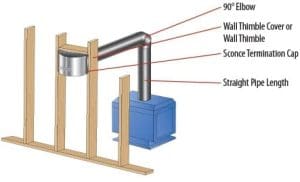
Duravent Direct Vent Typical install
- An inner pipe vents the exhaust.
- Can either vent out the top or out the back, for installation versatility.
- Can vent horizontally through an outside wall, or vertically through the roof – no chimney required!
- Ideal for adding warmth & efficient heating to a cold room.
- Most are certified as gas wall furnace for highest efficiency.
- Zero clearance to combustibles.
- Convenient to install, space-saving depth, but requires finishing such as a mantel and surround.
- Suitable for well-insulated homes or homes with no existing chimney.
- Always have an enclosed front.
- Best choice for newer, more air tight homes.
The Hearth, Patio & Barbecue Association recommends the installation of a carbon monoxide detector with all gas hearth products.
Electric Fireplace:
Electric fireplaces offer all the warmth and ambiance of a traditional fireplace without the work and maintenance. Perfect for new homes, cottages, high-rise apartment buildings, condominiums, or anywhere you want the look and feel of a fireplace in an easy-to-install package. Most come as packages that include the cabinetry that allows for a simple and quick installation.
When you’re tight on space but still want to enjoy the look and feel of a real fireplace, a corner fireplace is the perfect solution. Available in a wide variety of styles and colors to fit any decor, our corner fireplace selection maximizes your available space while letting you relax and enjoy cozy warmth.
Please use the following links to find out more.


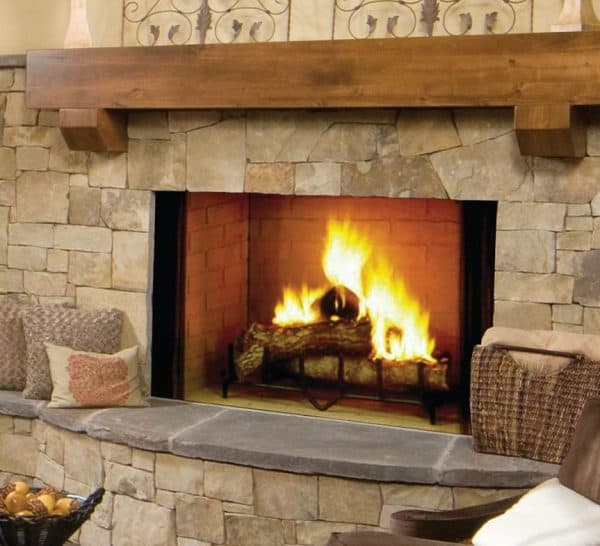
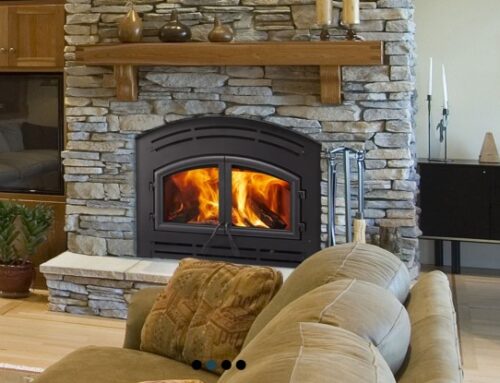
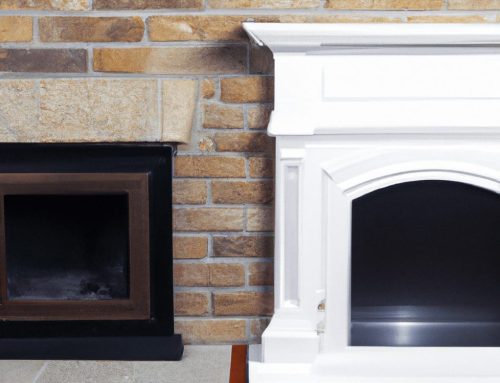







Leave A Comment
You must be logged in to post a comment.